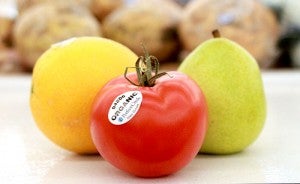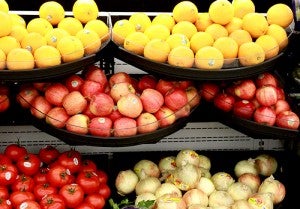Learning to balance food choices
Published 9:29 am Friday, July 5, 2013
Dietitian’s Digest by Amy Pleimling
I am constantly working on balancing time as a mother of three, a wife and a dietitian. Balance is a good thing, that comes into play in many facets of our lives.
We hear about balance when it comes to eating right. With nutrition, balance is one of my top recommendations. Having just attended a nutrition conference, I’m inspired to share some of the information I learned. I attended a seminar that addressed the balance on American dinner plates.
I was inspired by the message of balance in our diets in a different way. When I talk about balance with my clients, I am mainly referring to eating from various food groups so we can get the best nutrition. Or we talk about the balance of calories consumed versus calories burned. But what about the balance of attitudes and understandings about farming techniques and where food comes from?
At Hy-Vee, I see customers interested in where their food is coming from and how food is processed. People ask me about genetically modified foods (often called GMOs) and have expressed their concerns. Others are concerned about conventionally grown or raised foods and are thinking about organic products. Still others like the idea of shopping organic but don’t want a higher grocery bill. And more customers are expressing interest in buying locally raised products.
The conversation about food and how and where it is produced is a national issue. The two sides — conventional or organic/non-GMO raised foods — are battling back and forth, and the basics of nutrition are taking a backseat. Remembering the importance of nutrient density (or the health of foods), calorie balance and daily exercise get lost. But cost and taste are the major factors in why people choose foods. The conversation about farming and food production appears to be looking for the one right answer — right or wrong, black or white. So many factors and variables come into play. We need to consider there might be a way to find a balance in attitudes about food production. Some facts to consider:
• Organic foods are nutritious and absent of genetic modification, synthetic fertilizers, hormones, etc. But at this point there is no proven significant nutritional difference between conventional and organic crops and livestock with regard to vitamin and mineral content. An analysis of 237 studies comparing organic and conventionally grown food found little evidence that organic foods are more nutritious.
• Organic farms are labor-intensive, and that product costs more and can’t possibly meet consumer demand.
I want everyone to have food that is valuable and healthy for our families and for the world. As I seek out answers for my customers, and for my family, I realize these issues are very complex. One example is the issue of sweet potatoes in Tanzania. They were inedible because of weevil infestation. In that area of the world, these sweet potatoes are a staple. Biotechnology produced a sweet potato that is resistant to this insect, which makes it possible to produce this vegetable and provide economical nutrition.
There are challenges in food production and many variables that go into the products we see in our markets. It isn’t a black-or-white issue. There might be room for all these practices to coexist. It’s great that consumers are more interested in their food and where it comes from. But as always, things are more complicated than they seem, and a balanced approach to your food choices is my reigning recommendation.
Amy Pleimling is the dietitian for the Hy-Vee grocery store in Albert Lea.







